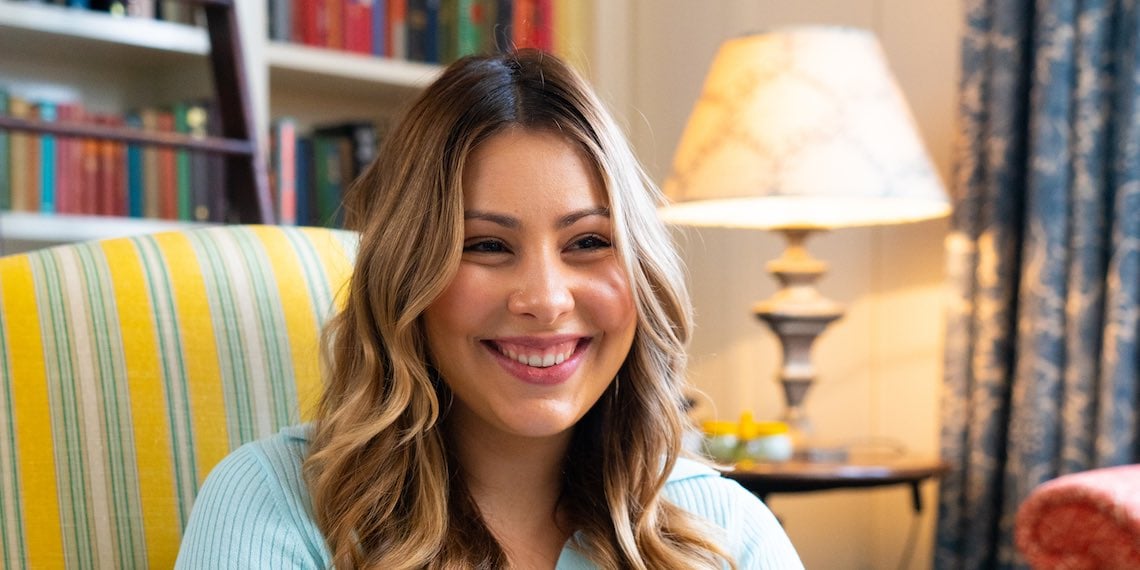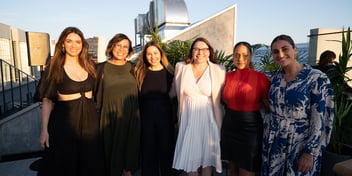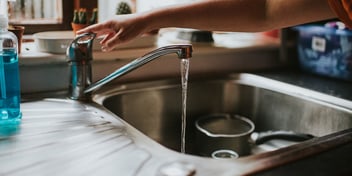One beauty brand’s water story and journey into conservation

"Sustainably sourced ingredients" is a catchall most cosmetics consumers have become familiar with as brands strive towards more environmentally friendly practices. However, it’s not so common for beauty brands to measure or advertise their water footprint.
But Conserving Beauty is out to change that. The innovative and water-wise Australian beauty brand is dedicated to raising awareness around water consumption in the cosmetics industry, and working hard to change the status quo when it comes to ensuring beauty is sustainable.
The theme of this year’s National Water Week is "Our Water Story", so we asked AWA member and sustainable cosmetics game-changer, Conserving Beauty, to share its journey so far – in particular, how and why the beauty brand became obsessed with water conservation.
Coming from a science and supply chain background, Conserving Beauty founding CEO Natassia Nicolao said her time spent in the cosmetics industry stoked her interest in sustainable water practice.
“For the past eight years I’ve been working in the beauty industry, with a strong focus on ethical sourcing, supply chain, and product development. I noticed that many products are formulated around water,” Nicolao said.
“The majority of products are 70 to 90% water. Some preservatives are added, and a sprinkle of the good stuff, which are the ingredients that have a direct benefit for the skin.”
Nicolao said she also noticed a huge gap in terms of sustainably managing water-use within beauty products, but also managing the impact of cosmetic by-products on the natural environment.
“Growing up in Australia, we can all relate to water conservation. We've all had a time where water has been top of mind. And I couldn’t help but wonder why that conversation was not being had in the beauty industry,” she said.
“About two years ago, I started to think about the [United Nations Sustainable Development Goals] and the global water crisis, which we all face: how can the beauty industry be a part of the solution, rather than the problem? How can the beauty sector help to protect and conserve our most precious resource?
“I was interested in innovating to create beauty products that don’t rely on water as a base ingredient. But that soon developed into taking a much closer look at water use throughout the entire product supply chain, with a particularly strong focus on how we can save water and measure those savings, too.”
While Conserving Beauty is still relatively new to market, the brand has already released the first ever dissolving makeup wipe and sheet mask, as well as a range of water-less products, and is soon to publish and openly advertise the water-savings profile of each of its offerings.
“Water is the heart of our business. We exist to help reduce the beauty industry's reliance on water and help shine a light on ways that customers can help reduce their water footprint through their beauty routine,” Nicolao said.
Measuring beauty’s footprint
Nicolao said that while her journey started with formulating products without water and selecting ingredients that have a low water footprint, she soon became deeply involved in working on measuring the water footprint of the company.
“Through my journey, I was lucky to meet two people who had a hand in writing the UN Sustainable Development Goals. They directed me towards the Water Footprint Network, who are global leaders in water footprint assessment,” she said.
“I explained my vision, and the products I was formulating, and asked for their help in terms of doing some water footprint research, mapping and measuring. I wanted to be able to measure the water savings we were making by taking a waterless approach.
“We've been doing a customer research project for over a year, and are very excited about publishing the results later this year. We're also really excited to start measuring and publishing how much water our customers save when they invest in one of our products.”
Nicolao said it’s taken longer than expected to map the company’s water footprint, and the process has been very detailed and comprehensive.
“It’s actually really challenging to map and measure the water footprint of a product. The water footprint involves many things, including where and how the ingredient is grown, how it is harvested, how it is manufactured, processing, producing, packaging – everything,” she said.
“But it's definitely been an eye-opener. Not only are we factoring in every single element that has a water footprint, we're also factoring in the countries we are procuring ingredients from, and whether or not that country is facing higher water scarcity.
“It’s quite a complex, robust project that has really taken on a life of its own, but it's been fascinating.”
Driving sustainability
While Conserving Beauty has water conservation at its heart, Nicolao said she is also dedicated to ensuring the company is sustainable in all areas, including carbon, waste and environmental considerations.
“We’re aligning our business with the aims of SDGs. It still matters to look at a product holistically and how we can actively help reduce the water footprint, in line with SDG 6. But, we're focused on climate action, too,” she said.
“We manage our carbon footprint and are very proud to be a carbon-positive certified business. But we also have a non-for-profit partnership with an organisation called SeaTrees.
“For every single product purchased, we plant a mangrove tree. And one mangrove tree sequesters approximately 308 kilograms of carbon. It helps to nurture and create habitat for marine life to flourish, and it creates local employment for two villages.”
Nicolao said the company manages its waste footprint by using infinitely recyclable, home-compostable materials for packaging, and an innovative fabric technology for dissolvable products.
“We have exclusive access to a patent for a fabric that dissolves in water after use. I am well aware that the water sector has faced challenges when it comes to wet-wipe products being advertised as ‘flushable’,” she said.
“But we don’t want to add to that issue, and have a product that meets the new flushables standards. So water professionals can rest assured that our products are really, truly, 100% flushable. They disintegrate within 60 seconds.”
Changing beauty
Nicolao said that by publishing the company’s water footprint and measuring water savings at a product level, she hopes to highlight how much more of an impact consumers can make by being aware of the water used to create the products that they choose.
“When I asked one of the SDG writers what I could do to help with water conservation, he said the best thing I could do is help put a spotlight on the importance of water conservation for a community that maybe hadn't thought about it before,” she said.
“And I really think that's most beauty consumers. But people really do care about sustainability and the environment, and usually want to help. By sharing our story and highlighting our passion for water conservation, we hope to help shift the dial on water-use in the beauty sector.
“I think it would be absolutely incredible if other brands got onboard with water conservation, too. I’d love to see every brand doing what we’re doing.
“A beauty brand might not seem to be the most conventional pathway towards water conservation. But the more awareness we can raise around how much water is used to create the things we use everyday, the more likely we are to impart real and lasting change.”
Pictured: Natassia Nicolao, Founder and CEO, Conserving Beauty



